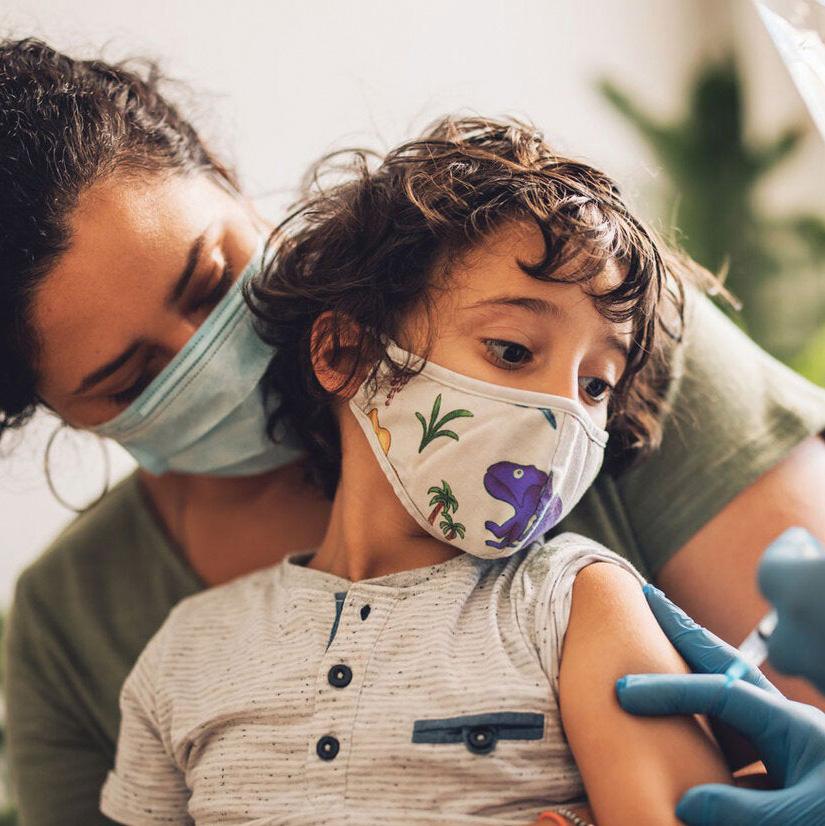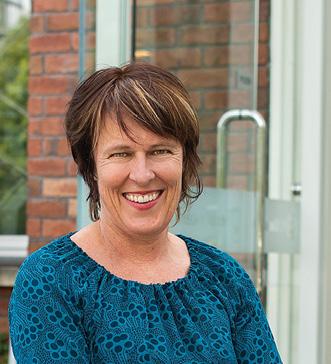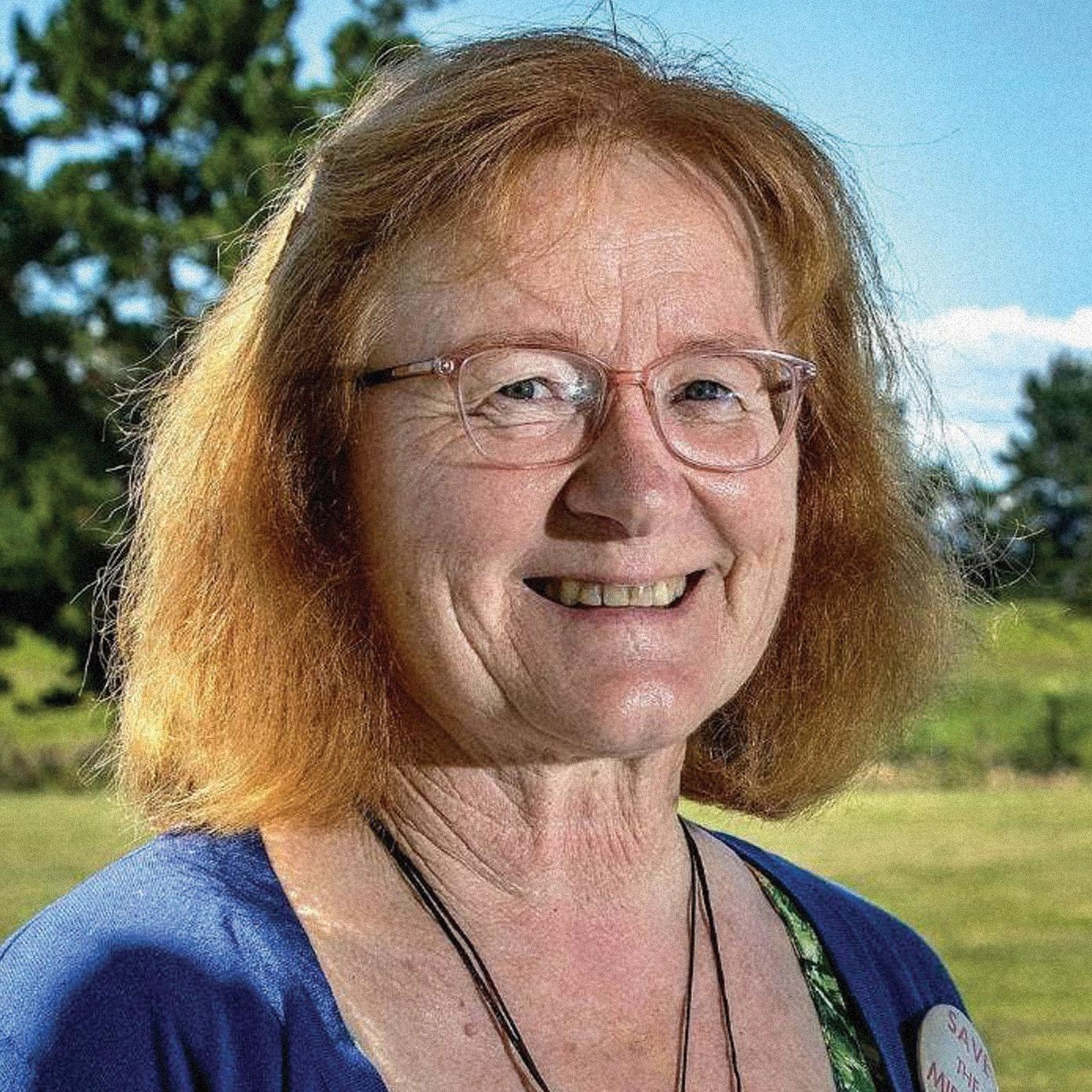
7 minute read
EMERGENCY RESPONSE
As I put pen to paper to write this column, media reports of the devastating impacts of weather events in Auckland, Northland, and more recently, the Hawke's Bay and Gisborne are permeating the airwaves. Cyclones Hale, Gabrielle, and unprecendented rains have provoked five states of emergency so far this year, and it's only mid-February.
As highlighted in this edition of the magazine’s series on climate change (pg. 20), we need to prepare for a new normal; one in which there will be more frequent and severe weather-related events causing damage to infrastructure and property, and disruption to transportation or other essential services, including midwifery and maternity.
In addition to dealing with their own personal circumstances (damage to property and possessions, displacement from homes or housing), midwives have had another challenge to manage. As the predominant workforce in maternity care (an acute 24/7 primary, secondary and tertiary service), our profession holds the responsibility for maintaining maternity service continuity and accessibility during such events. Just as we saw during the Covid-19 response, the essential and acute nature of the maternity service is a secret, hidden in plain sight. Midwives are so adept at ‘managing’ their caseloadsworking with colleagues to ensure ongoing services by rearranging and re-prioritising care, or stepping up to fill roster gaps to cover colleagues who are unable to get to work - that the additional resources needed to enable the midwifery and maternity service to continue in the face of adversity is often invisible. The College has heard examples of midwives inadvertently finding themselves in precarious situations as they braved the
Our profession holds the responsibility for maintaining maternity service continuity and accessibility during such events. Just as we saw during the Covid-19 response, the essential and acute nature of the maternity service is a secret, hidden in plain sight.
ALISON EDDY CHIEF EXECUTIVE

weather and flooded roads to make their way to rostered shifts or attend emergency call-outs during the peak of the January and February events. Given our workforce shortages, midwives are acutely aware that there is no ‘fat in the system’ and if they don’t turn up, there are real risks that services will not be provided, women will miss out on essential care, or colleagues will be further stretched and stressed due to staff absences. The College’s role is to represent and advocate for midwives at this time, as we did throughout the Covid-19 response. At our request, Te Whatu Ora quickly agreed to apply exemptions to some Section 88 payment rules, and MERAS has negotiated ‘force majeure’ provisions for midwives who were unable to make it to work, providing some short-term financial relief. The College regions have been providing pastoral and practical support for affected members, but like any natural disaster of this scale, the road to full recovery - both physically and mentally - will be long. The reality of ongoing disruption to many aspects of life which typically occurs in the aftermath of such events is a slow burn, which can insidiously lead to chronic stress. In the words of our previous prime minister, being kind at this time is a seemingly small, yet important antidote that we can all embrace.
Future Governance And Strategy For The College
During the process of developing our strategic plan, the College’s board identified four focus areas (below). The plan is in final editing stages and te reo translation, and will shortly be published on the College’s website. An overarching theme of how the College enacts its obligations to Te Tiriti o Waitangi
College strategic plan priority areas 2022 - 2026 Ōritetanga and how our work supports equity to be achieved, is threaded throughout the plan. As we turned the spotlight on our organisation throughout the development process, the board identified the need for a cultural review; the final draft report of which is being considered at present. In addition to this, the need to consider our present governance model became apparent.
The College has always understood the importance of maintaining a sense of collectivism. As a small profession, it is unhelpful to have a variety of separate organisations representing the various midwifery interests or issues. As well as reflecting the founding principle of partnership (expressed by having consumer representation in governance and other College processes, e.g. MSR and Resolutions Committees), the College’s governance model also reflects collectivisation, through the broad and diverse composition of our governance body; the national board. This model has always been highly consultative and consensus-based, to ensure members’ views are represented and involved in decision-making processes. Since the establishment of the College in 1989, the governance structure has undergone a
Equity, inclusion & belonging Rangatiratanga
Leadership & advocacy Te mahi
Strengthening our organisational structure & capacity number of changes; as the diversity of the profession has grown, so too has the number of members on the board, to ensure its representative nature remains relevant.
This model means that the board is large, currently containing the following representatives:
• Kuia and elder
• Elected president
• 11 elected regional chairs; one for each College region (two for Auckland)
• Two Ngā Maia Māori Midwives representatives
• Two Pasifika Midwives Aotearoa representatives
• Up to four consumers
• Two student representatives (rotated around the schools of midwifery)
• Chief Executive (CE)
This makes a total of 25 individual board members. There are additional participants in attendance at board meetings, including an ex-officio education consultant, the independent member of the finance committee and some College staff. Frequently, subregional chairs also attend the board meetings as observers, and both incoming and outgoing chairs may also attend as part of the handover process. It is not uncommon to have in excess of 30 participants at any given board meeting. In latter years, a finance committee (a sub-committee of the board, including an independent member) has been established; its specific terms of reference requiring it to provide: strategic direction; financial oversight and advice; consideration of emerging issues; review of risks and mitigation strategies; support and mentoring for the CE; and coordination of the CE performance review. This smaller group reports to the board in an advisory capacity, ensuring overall accountability for the College.
The board has identified that although some aspects of our current governance model are highly valued - including its broad representative nature which brings a diversity of perspectives and range of skills, valuable networking, and relationships (and the support these offer) - there are some aspects that don’t work so well.
With a large board size, meetings are fulsome, with at times robust debate to build consensus on complex practice, strategic, political and governance issues. The model is highly democratic and consultative, however, it can be slow to move issues along. As well as the relatively infrequent timing of face-to-face meetings, regional chair roles are for two-year terms (albeit some with the right of renewal), so board member turnover can be high. Responsibility is somewhat diluted with such a large group, and communication can be challenging.
The need to increase Māori representation within governance and throughout the capability and capacity of our organisation was identified by the board as a key goal. Since finalising the strategic plan, the board has reviewed the governance models of organisations with similar purposes to ours, considering the principles and values that are important for us to reflect and maintain, as well as what other structures or forums could be established to ensure necessary functions and activities are not lost, but instead strengthened through any changes that eventuate. These are early days, but however we proceed, it is essential we remain true to our principles as a consensusbased organisation grounded in collectivism, and members must be able to have a say in whatever the future looks like. square
Midwifery workforce group
At last, following many months of deliberations, Te Whatu Ora have established a Midwifery Workforce Steering Group, to oversee the strategic work needed to address our workforce crisis. It is anticipated that working groups will be set up under the steering group, which will oversee initiatives focused on: enhancing workforce attraction; recruitment; supply; equity; development; workforce and workplace culture; and the overall resilience of the midwifery workforce. square
Community Midwifery Infrastructure Working Group meeting
Te Whatu Ora has established a working group to provide advice on the development or expansion of infrastructural supports for self-employed midwives working under the Section 88 Notice. The group has broad representation, from practising LMC midwives working in a range of contexts, to College representatives, whānau/consumer representation, Ngā Māia and Pasifika midwives, as well as employed midwives working in caseload or community models. square
Congratulations Priscilla Baken, MNZM
Priscilla Baken is the latest midwife to become a Member of the New Zealand Order of Merit for services to midwifery, having worked in the profession for 41 years in New Zealand, the United Kingdom and Niger, Africa.

Over those years, Priscilla has worked as a homebirth midwife, helped to establish the Community Birth Services Trust, lectured in undergraduate midwifery education, and been part of the MidCentral community midwifery team.
One of the founding members of the College, Priscilla has also served as a midwifery standards reviewer, midwife consultant, expert witness, and a midwifery practice mentor. She has presented research both nationally and internationally on the effectiveness of homebirth, the impact of labour and birth on breastfeeding, and community birth services as a model of community-led maternity service provision. The College congratulates Priscilla and acknowledges the significant influence her work and contribution has had on the whānau she has cared for, as well as the many midwives she has mentored and guided throughout her career.
Ngā mihi nunui ki a koe e Priscilla. square
Changes to cervical screening programme planned from July 2023
From July 2023, the cervical screening programme will look different. The primary test for cervical screening (known as the smear test) will change to a human papillomavirus (HPV) test with the option available for self-testing. The primary aim of the change is to identify people at higher risk of developing cervical cancer for further investigation. About four out of five people have HPV infection at some stage in life. The new screening method will test for the presence of HPV, making screening for cervical cancer more accessible and identifying those who need further testing at an earlier stage than the current cervical smear test.
For midwives and women, this means:
• Testing can be offered during pregnancy by the midwife or as a selftest, alongside other health screening.
• If the HPV test is negative, women can be reassured that there is a low risk of developing abnormal cells that may lead to cervical cancer within the next five years. In these cases, the screening will only be required five yearly, as opposed to the current three yearly programme.

• In the case of a positive test, referral for further testing can be made. square
Covid-19 vaccine approved for children at high risk of adverse outcomes
In December 2022, Ministers approved use of the paediatric Pfizer Covid-19 vaccine for children aged six months to four years








